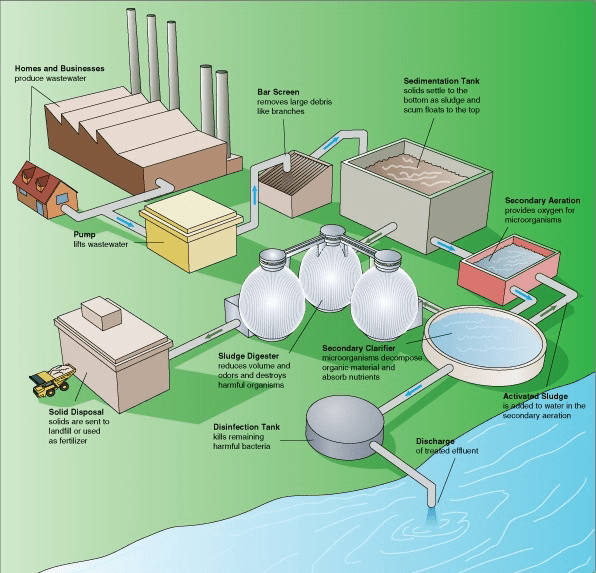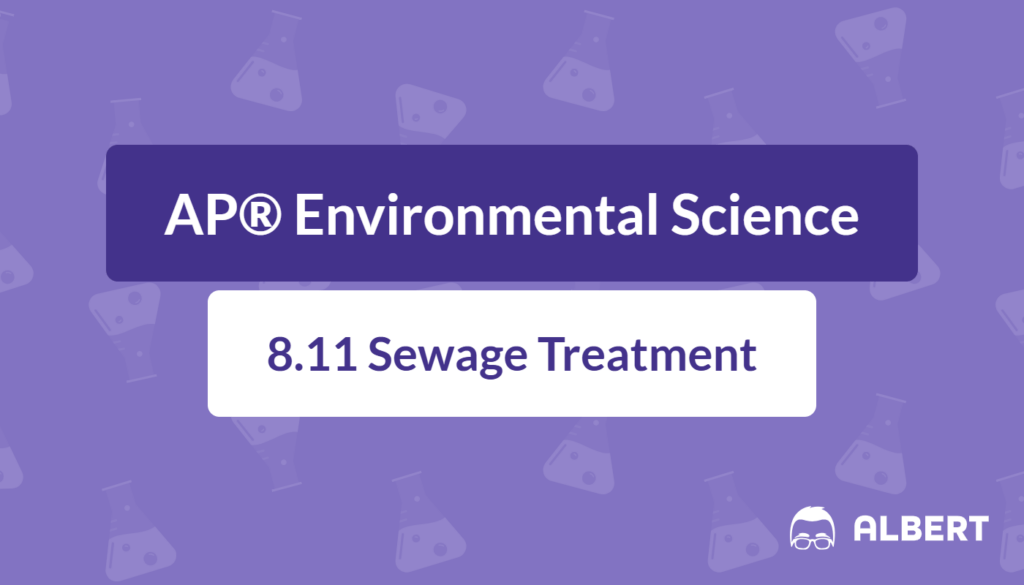What We Review
Introduction
Sewage treatment plays a critical role in safeguarding public health and preserving water quality. When wastewater from households, businesses, and industrial facilities is released into waterways without proper treatment, pathogens and pollutants can spread rapidly. Therefore, understanding how sewage is treated is essential to managing water resources responsibly, especially in a world where population growth continues to add stress to our natural systems. Sewage treatment is commonly divided into three main stages—primary, secondary, and tertiary—each stage targeting different types of contaminants.
What Is Sewage Treatment?
Sewage treatment is the process of removing contaminants, organic matter, and harmful organisms from wastewater before it returns to water bodies. This practice ensures that rivers, lakes, and oceans remain safe for aquatic life, recreation, and irrigation. Moreover, it prevents the spread of diseases that can occur when untreated sewage contaminates drinking water sources.
Imagine wastewater leaving a residential neighborhood after every shower, load of laundry, and toilet flush. Combined with runoff from industrial processes, this water carries a wide range of pollutants, including pathogens, oils, and chemicals. Through proper sewage treatment, these harmful substances are separated out so that the treated water can be discharged or even reused in certain contexts. This process is a cornerstone of environmental science and public health efforts, ensuring that communities maintain cleaner waterways.
The Stages of Sewage Treatment
Effective sewage treatment follows a step-by-step approach that systematically removes debris, organic matter, and fine pollutants. Each stage—primary, secondary, and tertiary—builds on the previous one to produce cleaner, safer effluent. Students should know these stages in detail to understand how water is treated before being released into the environment.

1. Primary Treatment
Definition and Purpose
Primary treatment is the initial stage where large objects and solid waste are physically removed from the incoming sewage. The chief aim is to separate heavier solids from liquids, preparing the mixture for more advanced treatment later. Though relatively simple, primary treatment significantly improves water clarity and reduces the burden on secondary treatment processes.
Process Breakdown
- Screening: Wastewater flows through screens and grates designed to trap large particles such as plastics and sticks.
- Settling Tank: The filtered water then enters a settling tank, allowing heavier solids to sink to the bottom as sludge.
- Sludge Removal: Sludge collected at the bottom can be processed further for disposal or, in some facilities, converted into biogas—an alternative renewable energy source.
Example: Step-by-Step Primary Treatment
- Wastewater arrives at the treatment plant and passes through coarse screens.
- Large debris like paper, plastic, and other visible objects are removed.
- The partially clarified wastewater then flows into a settling tank.
- Heavier solids gradually settle at the bottom, forming sludge.
Outcome
In this initial step, a considerable volume of contaminants is removed, leaving relatively clearer water—often described as sediment-free. However, organic pollutants still remain dissolved or suspended, so the water proceeds to secondary treatment.
2. Secondary Treatment
Definition and Purpose
Secondary treatment relies on biological processes to eliminate dissolved and suspended organic matter left in the wastewater. This stage uses beneficial bacteria to consume organic pollutants, transforming them into simpler end products. Therefore, secondary treatment significantly decreases the concentration of harmful substances.
Process Breakdown
- Aeration Tank: Wastewater arriving from primary treatment is introduced to an aeration tank. Oxygen is often added by pumping air into the water, creating an environment where aerobic bacteria can thrive and break down organic materials.
- Biological Activity: Microorganisms consume organic matter, converting it into carbon dioxide and excess bacterial cells (often called sludge).
- Final Settling: After sufficient aeration, the mixture undergoes another settling phase. The newly formed sludge settles out, leaving much cleaner water on top.
Example: Step-by-Step Secondary Treatment
- Partially treated water from the primary stage flows into the aeration tank.
- Air is injected to provide oxygen for bacteria.
- The bacteria feed on organic material, producing carbon dioxide and additional sludge.
- The fluid then moves to another settling tank, where the bacterial sludge settles to the bottom.
Outcome
By the end of secondary treatment, most organic contaminants are removed. The overall quality of the water is vastly improved, and the sludge generated can be further processed or utilized as fertilizer in some contexts. In addition, this stage is vital in maintaining water bodies’ ecological balance, as excessive organic matter leads to lower oxygen levels and harms aquatic life.
3. Tertiary Treatment
Definition and Purpose
Tertiary treatment is the advanced stage aimed at removing any remaining pollutants, nutrients, or pathogens not eliminated during primary and secondary treatment. This stage relies on chemical, physical, or ecological processes to refine water further. Consequently, the final effluent can meet stringent safety standards before it is discharged or reused.
Process Breakdown
- Filtration: Sand filters or other specialized filters often trap smaller particles.
- Chemical Coagulation: This can bind microscopic particles together, making them easier to remove.
- Additional Disinfection: Some facilities carry out more targeted germ-killing measures like chlorination, ozonation, or ultraviolet (UV) treatment here as well.
Example: Step-by-Step Tertiary Treatment
- The water from secondary treatment passes through sand or activated carbon filters to capture fine particles.
- Chemical treatment (such as coagulation) may be applied to remove difficult contaminants like phosphates.
- The water undergoes a final pass through a disinfection process, which could be chlorine addition, ozone treatment, or UV light exposure.
Outcome
Once tertiary treatment is complete, the effluent is deemed safe enough for release into rivers, lakes, or oceans. Some regions also use it for irrigation and industrial processes, reducing the strain on freshwater supplies. Thus, tertiary treatment completes the comprehensive strategy for wastewater purification.
Importance of Disinfection
Disinfection is a vital step in sewage treatment facilities worldwide. Pathogens must be eradicated from the treated water before discharge to safeguard human health and the environment. Viral and bacterial outbreaks can occur if pathogens escape into local waterways. Therefore, disinfection methods remain an integral part of the tertiary stage, ensuring waterborne diseases do not spread.
Common Disinfection Methods:
- Chlorination: Chlorine effectively kills most microorganisms, although it may produce byproducts.
- Ozonation: Ozone oxidizes pollutants and destroys pathogens, but equipment can be costly.
- Ultraviolet (UV) Light: UV radiation damages the genetic material of microbes, preventing reproduction without adding chemicals.
Each approach has its advantages and trade-offs. However, all serve a fundamental purpose—ensuring that the final effluent meets safety criteria set by regulatory agencies, protecting both ecosystems and communities.
Conclusion
Sewage treatment is indispensable in modern environmental management. By separating contaminants step by step—through primary, secondary, and tertiary processes—treatment facilities produce water that is far cleaner than when it first entered the system. Such careful handling of wastewater helps protect drinking water sources, maintain biodiversity, and uphold public health standards. Although sewage treatment might appear complex, breaking it into stages makes it more approachable. Students who grasp these concepts are well-prepared to address real-world challenges, especially as population growth models predict increases in wastewater volume.
Best practices in sewage treatment also highlight the potential to harness renewable energy from sludge and to recover reusable water for irrigation and other purposes. Through smarter water management, communities everywhere can conserve resources, reduce pollution, and support a healthier planet.
Key Vocabulary
- Sewage Treatment: The process of removing contaminants from wastewater to protect health and the environment.
- Primary Treatment: The first stage that physically removes large objects and allows solids to settle out.
- Secondary Treatment: The biological process where bacteria break down dissolved organic matter.
- Tertiary Treatment: The advanced stage that removes remaining contaminants through chemical or ecological processes.
- Disinfection: The step that kills pathogens, commonly using chlorine, ozone, or UV light before discharge.
Sharpen Your Skills for AP® Environmental Science
Are you preparing for the AP® Environmental Science test? We’ve got you covered! Try our review articles designed to help you confidently tackle real-world AP® Environmental Science problems. You’ll find everything you need to succeed, from quick tips to detailed strategies. Start exploring now!
- AP® Environmental Science: 8.8 Review
- AP® Environmental Science: 8.9 Review
- AP® Environmental Science: 8.10 Review
Need help preparing for your AP® Environmental Science exam?
Albert has hundreds of AP® Environmental Science practice questions, free response, and full-length practice tests to try out.








